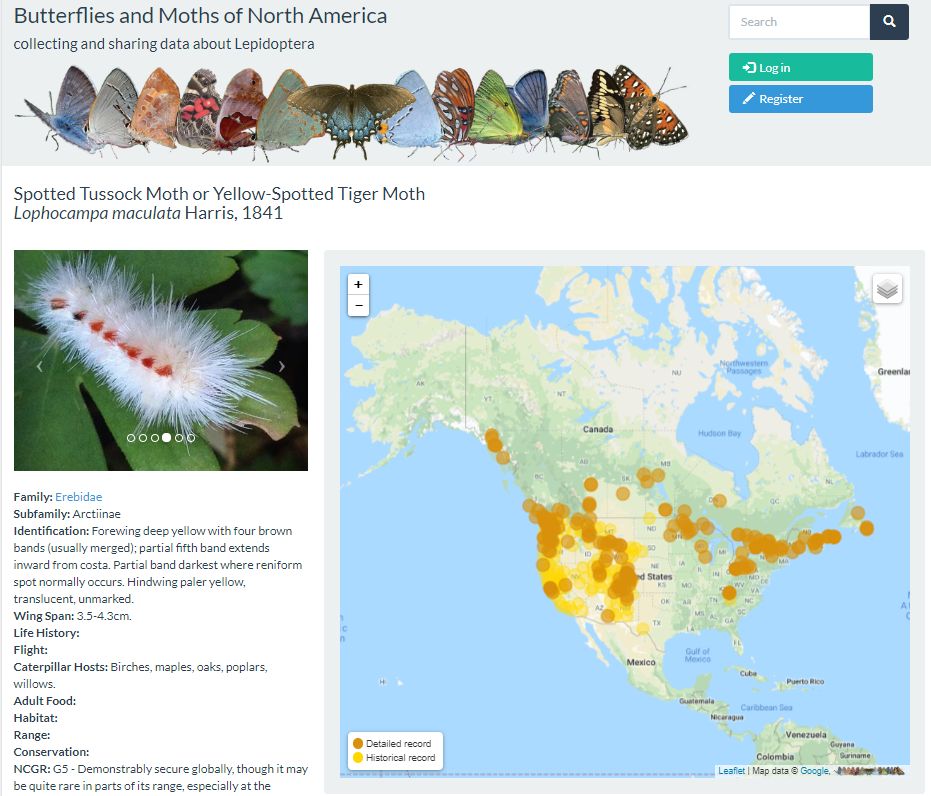I often use BONAP's North American Plant Atlas, for researching plant taxa ranges.
BONAP maintains relatively complete phytogeographic and related botanical databases for all free-living vascular plants found in North America (north of Mexico). For over four decades, we have worked collaboratively with many federal and state government agencies, private groups and individuals across the continent to produce and edit our databases
It generates incredibly useful range maps, and I can search by higher taxa (i.e., genus) to investigate many species based on their ranges at once. For example, Fagus:
However, I have so far been unable to find a similar online atlas (or any range-map query tool) for insects.
Does anyone know of any similar range-map resources for insects?
- I'm most interested in maps for the US, but global maps would be incredibly awesome :)






